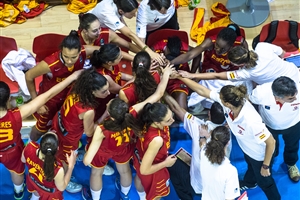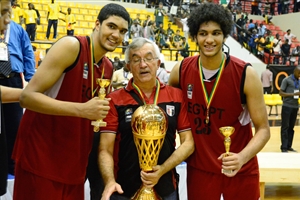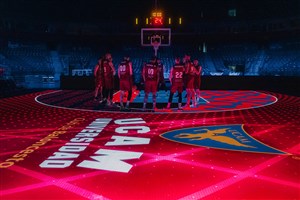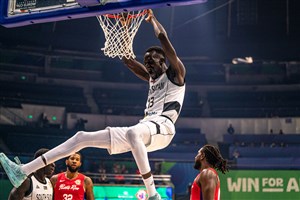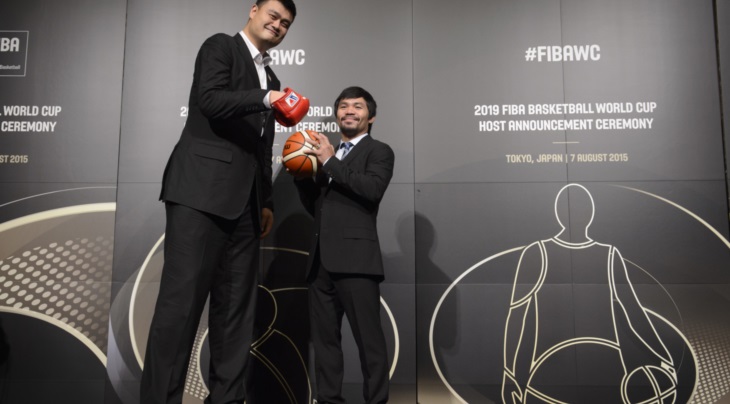
China beats Puso
MANILA (Enzo Flojo's Asia on my Mind) - Puso, or heart, has been the battlecry of the Philippines men’s basketball team for the past few years. It has, on occasion, carried the team to great heights, but in the Filipinos’ bid to host the 2019 FIBA Basketball World Cup, puso was defeated by the might and ingenuity of the Chinese.
It was a valiant effort by both parties. China and the Philippines showed brilliantly executed presentations. Both countries capitalized on their respective strengths — China with its superb infrastructure, transportation, and wealth of experience, and the Philippines with its fans and its love for basketball.
In the end, however, Puso couldn’t persuade FIBA to forego China’s numerous assets. More venues? Less traffic? A bigger market? A more robust economy? A potentially deeper pool of basketball talent that promises a competitive team? Checks all across the board for the big red machine.
Whereas the Philippines presentation focused on the emotional aspect of the event and only touched on the hosting capabilities of Metro Manila and Cebu, China’s presentation was more straight to the point. The Chinese showed that they have everything to ensure a smooth and grand event. Clearly, they were the hosts FIBA needed to be able to meet its goal of elevating basketball to new heights.
Looking back, it was really a match-up reminiscent of David versus Goliath.
Let’s look at it by the numbers:
The Philippines offered just 2 main cities (Metro Manila and Cebu), possibly 4 main arenas (existing — Araneta Coliseum, Philippine Arena, and MOA Arena; planned - Seaside City Arena), and potentially 97,000 seats overall. The Philippine capital has only three metro rail lines servicing an estimated 12 million people.
In contrast, China offered 8 main cities (Beijing, Nanjing, Suzhou, Wuhan, Gunagzhou, Shenzen, Foshan, and Dongguan), potentially 9 main arenas (existing - Shougang Gymnasium, Mastercard Center, Nangang Gymnasium, Wuhan Gymnasium, Dongguan Arena, Guangzhou Gymnasium, New Shenzhen Arena; planned - Suzhou Industrial Park Sports Center, Foshan Metro Sports Arena), and potentially 102,000 seats overall
(although there are plans to further expand the smaller arenas like the Nangang Gymnasium and Dongguan Arena). In Beijing alone, there are 18 metro rail lines servicing an estimated 25 million people.
Needless to say, China has generally better airports, better (and more) hotels, less stressful traffic, and (believe it or not) the two biggest shopping malls in the world (New South China Mall in Dongguan and Golden Resources Mall in Beijing).
The Philippines had the overflowing passion, but China, hands down, had the means.
Remember, again, that the 2019 FIBA World Cup is all about growing the game of basketball. This can be seen in simple fact that 32 teams will qualify — the biggest FIBA tourney ever! It would be more beneficial for the event to have more visibility over a bigger geographical area, and this should lead a “bigger” experience/atmosphere rivaling that of the quadrennial FIFA World Cup. After everything was weighed and measured, in totally honesty, China is just better equipped to deliver on that kind of expectation.
FIBA wants a festive, bursting-at-the-seams, and one-of-a-kind sports spectacle (something the Philippines can offer), but not at the expense of practicality and stability (two things China is great at).
If you’re a Filipino basketball fan, though, don’t fret too much. There is still a silver lining. With China already seeded into the 2019 FIBA World Cup, that means there’s one less “superpower” to worry about when Gilas Pilipinas goes through the all-new qualifying phase set to start in late 2017. Australia and New Zealand will join the FIBA Asia-Pacific region and are practically ensured of two World Cup slots already, which means only five will be up for grabs for the “original” Asian teams. With a healthy and talented roster, the Philippines can advance.
And perhaps when the Philippines does qualify and meets China in the World Cup, we can be sure that will be a rock ‘em sock ‘em affair for the ages!
After everything, both delegations should be proud of their efforts. It’s clear they went all out to show the basketball world that they were both deserving and could deliver a memorable experience.
Maybe someday in the future, the Philippines will have another shot.
Just not that day. On that day, China beat Puso.
Enzo Flojo
FIBA
FIBA's columnists write on a wide range of topics relating to basketball that are of interest to them. The opinions they express are their own and in no way reflect those of FIBA.
FIBA takes no responsibility and gives no guarantees, warranties or representations, implied or otherwise, for the content or accuracy of the content and opinion expressed in the above article.



